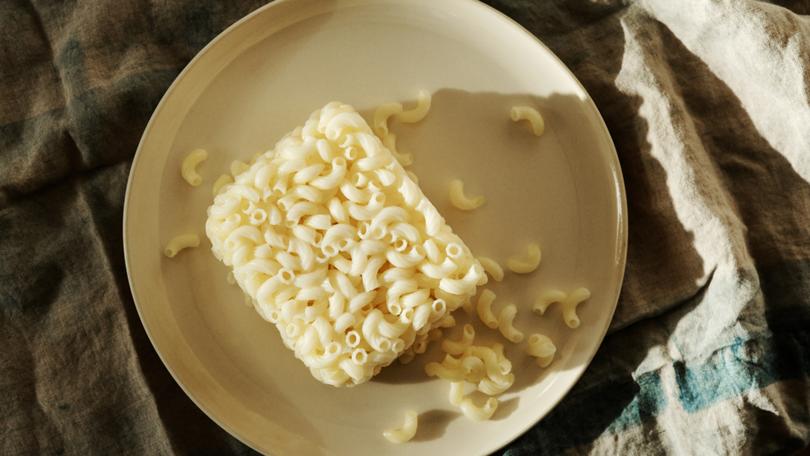The New York Times: Why pasta and rice may be healthier eaten as leftovers

It sounds like just another internet health hack: Cook some pasta or white rice and let it cool overnight in the refrigerator. By the next day, some of the natural starches in the food will have transformed into healthier versions, called resistant starches, which have been linked to a range of health benefits, including lower blood sugar, better gut health and a reduced risk of certain types of cancer.
The idea that you could change the health properties of a food by merely cooking and cooling it may sound too good to be true. But according to experts such as Balazs Bajka, a gut physiologist at King’s College London, there’s something to it.
Cooling starchy foods can cause some changes to their structure that may benefit your health, Bajka said. Here’s what we know.
Sign up to The Nightly's newsletters.
Get the first look at the digital newspaper, curated daily stories and breaking headlines delivered to your inbox.
By continuing you agree to our Terms and Privacy Policy.What is resistant starch?
Resistant starch is a type of fiber that is naturally present in many types of plant foods, such as whole grains, beans, nuts, seeds, green bananas and plantains. But it can also be increased in other foods that mainly contain regular starch, including rice, pasta and potatoes, after they are cooked and then cooled.
Cooking and cooling causes the food’s starch molecules to become tightly packed together, making them more difficult to digest, Bajka said. When this happens, some of the starch becomes “resistant,” meaning its sugar molecules aren’t as easily broken apart and absorbed into your bloodstream as they normally would be.
Even if you reheat the food as leftovers the next day, most of the resistant starch formed during cooling will remain, he added.

What are the health benefits of resistant starch?
Because resistant starches aren’t easily digested, they don’t spike your blood sugar as much as regular starch does, said Kimberley Rose-Francis, a dietitian in Florida who specializes in working with patients with diabetes.
Instead, the resistant starch continues on in your intestines, where it can feed the good microbes in your gut, Bajka said. This helps them flourish and make beneficial molecules that have been linked with lower cholesterol and inflammation and better gut health in general.
There’s also some evidence that resistant starches may play a role in reducing the risk of certain types of cancer, said Annette Goldberg, a dietitian at the Dana-Farber Cancer Institute in Boston, although more research is needed.
In one recent trial of more than 900 people with Lynch Syndrome, a genetic condition that increases the risk of developing various types of cancer, researchers split the participants into two groups: one that took 30 grams of a resistant starch supplement each day for up to four years, and another that took a placebo.
Up to 20 years later, the researchers found that although there was no change in the participants’ risk of colorectal cancer, those who took the resistant starch supplements were half as likely as those who took the placebo to develop other types of cancers, especially those of the upper gastrointestinal tract, such as in the stomach or pancreas. (The supplements used in the trial were provided by a company that makes starch ingredients, but the company was not involved with the study’s design or analysis.)
This technique may be especially useful for those with Type 2 diabetes or pre-diabetes.
When you cook and cool a starchy food, you’re also effectively increasing its fibre content, said Mindy Patterson, an associate professor of nutrition and food sciences at Texas Woman’s University.
Fibre has been linked to a host of health benefits including a reduced risk of heart disease, Type 2 diabetes and some types of cancer. And when consumed as resistant starch, it seems less likely than other forms of fibre to cause unpleasant effects such as gas or bloating, Patterson said.
The bottom line
Most people will benefit from consuming more fibre, whether it’s in the form of resistant starch or not, Patterson said.
Good sources of fibre include whole grains, fruits, vegetables and legumes. And aside from eating foods that naturally contain resistant starch, such as beans, barley, green bananas and oats, you can increase the levels of resistant starch in foods such as pasta, potatoes and rice by cooking and cooling them, Patterson said.
This technique may be especially useful for those with Type 2 diabetes or pre-diabetes, she said.
Rose-Francis encourages many of her clients with diabetes to experiment with cooking and cooling methods with rice, pasta or potatoes to see if that makes a difference in their blood sugar levels.
For them, this can be a powerful technique, she said, since many people with diabetes avoid eating starchy foods over fears that they might spike their blood sugar too high. This may explain why one of her TikTok videos on the topic has been viewed 1.3 million times. “It gives people hope,” she said.
This article originally appeared in The New York Times.
© 2023 The New York Times Company
Originally published on The New York Times
